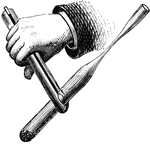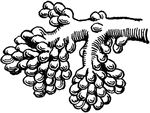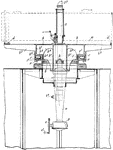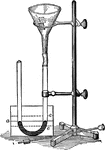
Effects of Water on Mercury in a U-tube
"After pouring mercury into the U-tube, the level of mercury is marked by a. c and e refer to the positions…

Prism Spectroscope from the Late 19th Century
"...a tube with a slit at the further end through which the light enters, and at the other end a collimating…

Pump
"The common pump consists of a hollow tube, the lower part of which, descending into the water, is called…

Sand Pump
"1. In rope-drilling, a cylinder, provided with a valve at the bottom, which is lowered into the drill-hole…
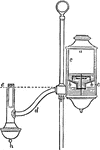
Reading Lamp
"An example of a form of reading lamp is seen here. The lamp is mounted on a standard on which it can…
Regnaults Hygrometer
"It consists of a glass tube or capsule A, having on the bottom and a little way up a highly polished…

Regnaults Manometer
"AB is a strong metal tube, closed at the lower end, and carrying at the upper a bent pipe for admitting…
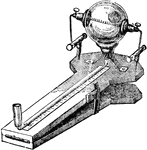
Reibungselectricitat
"This instrument consists of a glass tube of narrow bore, 16 to 17 inches long, to which is blown a…

Collection of Sewer Cross-Sections
"A conduit or canal constructed, especially in a town or city, to carry off superfluous, water, soil,…
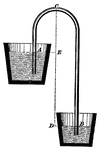
Siphon
"The action of the siphon illustrates the effect of atmospheric pressure. It is simply a bent tube having…

Siphon
"A bent tube with one limb longer than the other, by means of which a liquid can be drawn off to a lower…
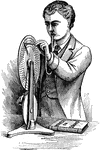
Siren
"Rotate the disk slowly, blowing meanwhile through a tube of about 3/16 inch bore, the nozzle of the…
Sleeve Nut
"A double nut which has right-hand and left-hand threads for attaching the joint-ends of rods or tubes;…
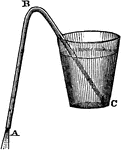
Syphon
"Take a tube bent like the letter U, and, having filled it with water, place a finger on each end, and…
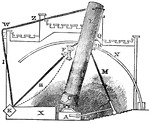
Telescope
"The following description of a section of Lord Rosse's telescope, though not so perfect as could be…
Trap
"To the end of the delivery-tube of a Florence flask containing water, attach a 'trap' so that the water…
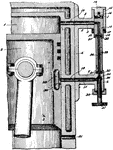
Ignition Tube
A piece of laboratory equipment. It is a laboratory tube used much in the same way as a boiling tube…
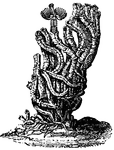
Calcareous Tubeworm (Serpula)
This worm is also called a fan worm, plume worm or red tube worm. "A Linnean genus of worms, subsequently…
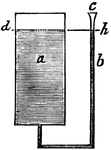
Water Pressure
"Suppose the cistern a to be capable of holding one hundred gallons, and into its bottom there be fitted…

Water Pressure
"Suppose a number of vessels, of different shapes and sizes to have a communication between them, by…
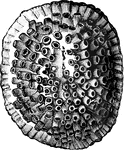
Tube of the water-pot shell magnified
"The animal in this case is inclosed in a cacareous tube, the anterior extremity of which is closed…
Tube of the watering-pot shell
"The animal in this case is inclosed in a cacareous tube, the anterior extremity of whichi is closed…

Wrenches
"1, Screw-wrench; 2, Tap-wrench; 3, Angle-wrench; 4, Tube-wrench; 5, Monkey-wrench for hexagonal and…
